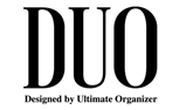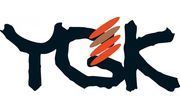Shout!'s Straight Point Twin Hook 22 is the latest evolution of the double hook for lures. With the same weight as the treble hook, a thicker and stronger hook can be used. But what are the advantages and disadvantages compared to other hooks? In natural bait fishing, the bait hook is the target of attacking the prey, but in the case of fishing with lures, the attack of the prey occurs on the lure itself, not the hook.
- Treble hook: The treble hook is the best solution for efficiently aiming close to the lure, which is the target of the attack of the prey. However, there are drawbacks when it comes to heavy fishing. Since the three hooks that make up the treble hook are structurally fixed by brazing, each hook is thin and easily stretched or broken. If the wire is thickened to compensate for weakness, the hooking speed will naturally decrease. Also, it becomes heavier and the movement of the lure gets worse. Also, since it's fixed by brazing, loading or twisting from the lateral direction is likely to occur depending on how the target is locked, which also causes stretching or bending. Although the fish attacks the bait and remains attached to the treble hook, it often comes off during the fight;
- Single Hook: To compensate for these disadvantages there is a single hook. If the weight is the same as that of a treble hook, a thicker hook line can be used in the case of a single hook, so it has a great advantage in terms of strength. Another advantage is that once hooked, there is little chance of unhooking. However, as a disadvantage, the coupling speed is undeniably reduced;
- Classic double hook: It's lighter than treble hooks and a thicker line can be used, but has the disadvantage that one hook faces right and one left, so it loses in terms of hooking compared to a single hook.
Consequently, each hook that is treble, single and double has both advantages and disadvantages. If you try to compensate for one of the disadvantages, a new disadvantage will be created. In this way it's necessary to determine the correct use of the hook based on the prey you want to aim at, the size of the lure and the balance of the equipment.
Here comes the new Twin Hook 22 which is composed of two hooks joined by the split ring that maintain the shape of the double hook with a heat shrink tube. When mounted on the lure, it does not turn sideways and maintains a position where it is easy to hook. Once the prey is hooked, the two hooks work independently depending on how they are hooked. When a strong lateral force or twist is generated which deforms the hook, the heat shrink tube will tear and prevent the hook from deforming or breaking. When it reaches the limit, it turns into a single hook. There has never before been a lure hook that changes depending on how the prey is retrieved. It can be said that the "Twin Hook" is a hooking system that has overcome all the disadvantages of the three types of hooks described above. This double hook system will become the world standard for all heavy-duty approaches!
Makoto Ono Planning and Development Staff.



















